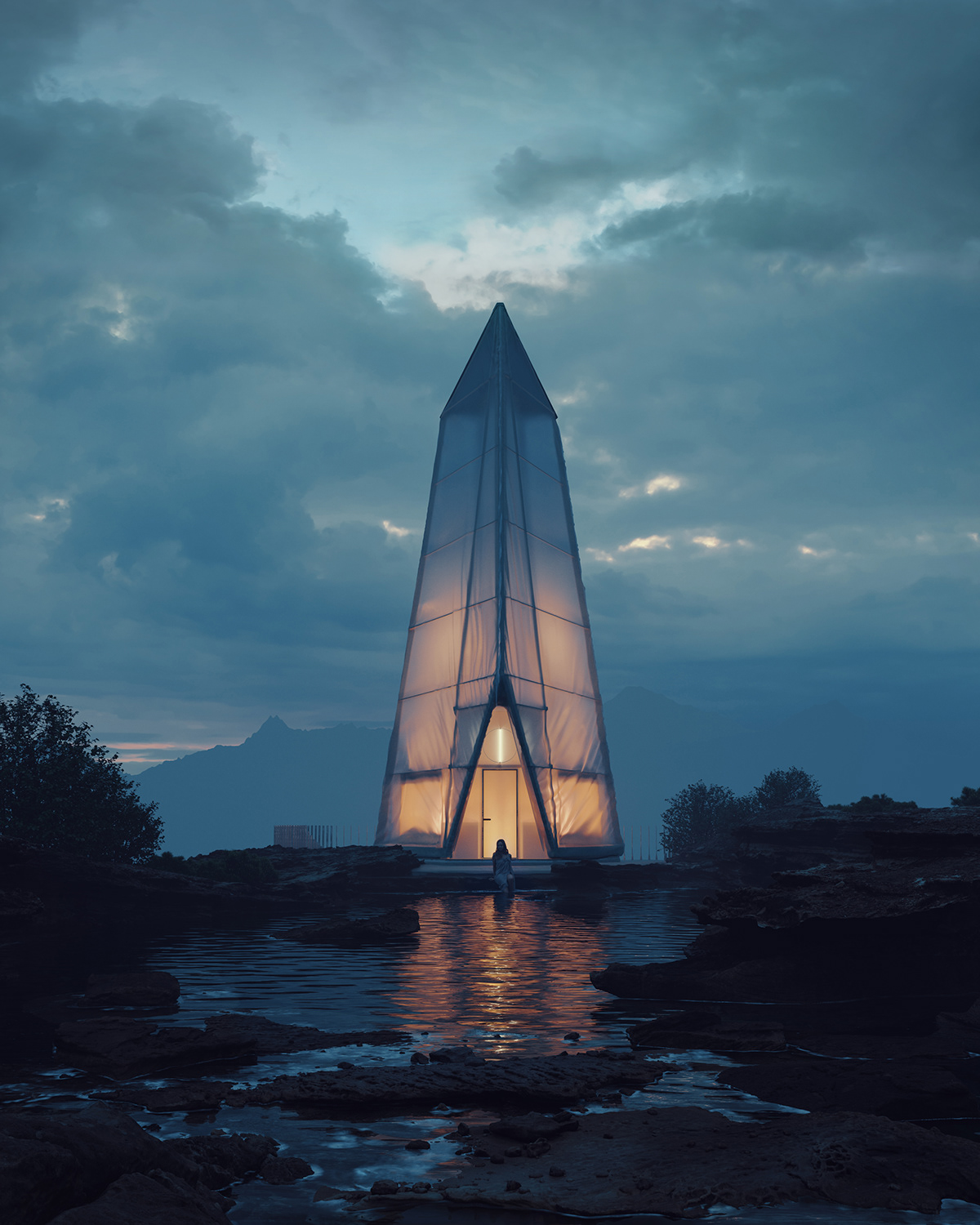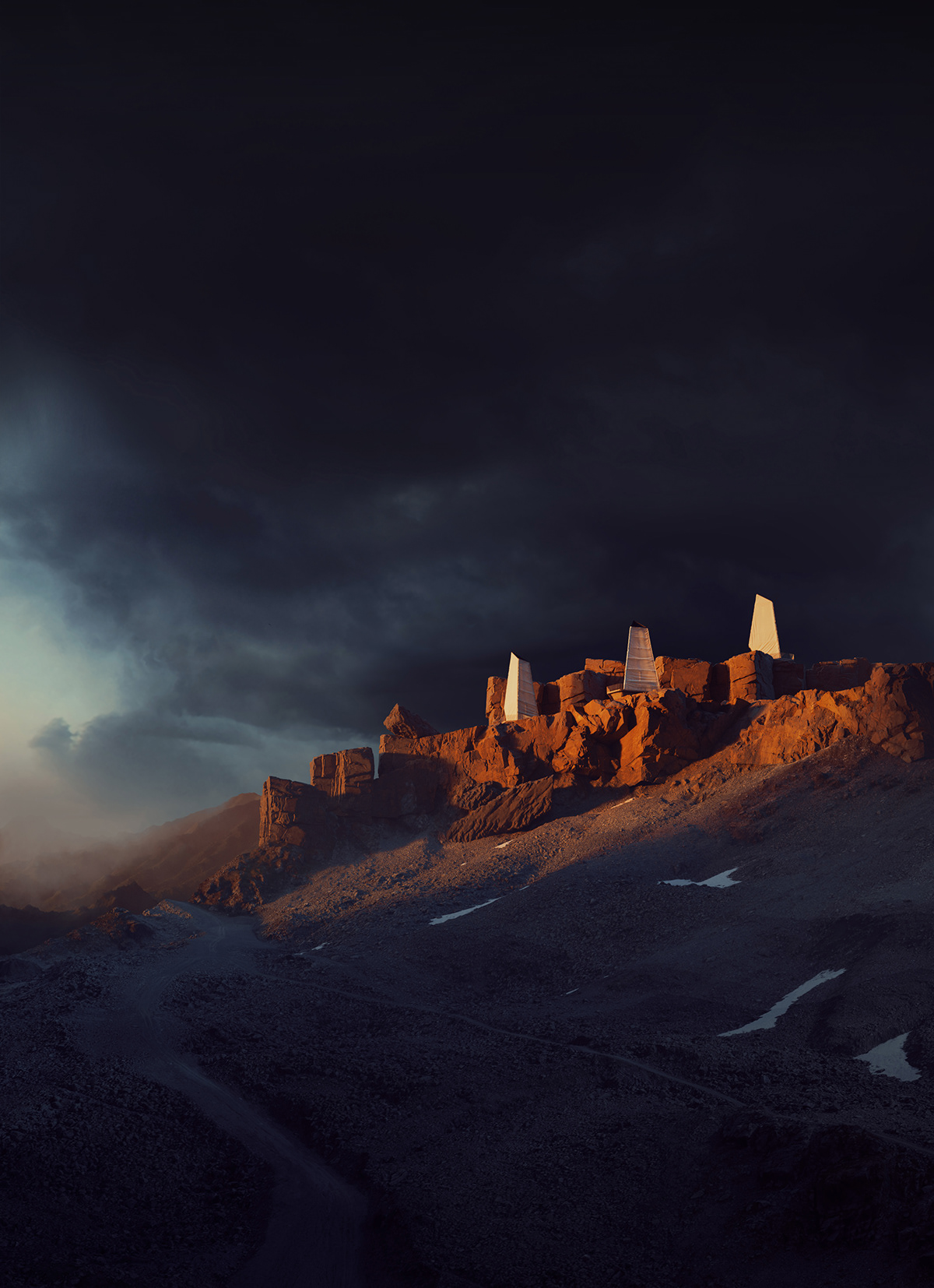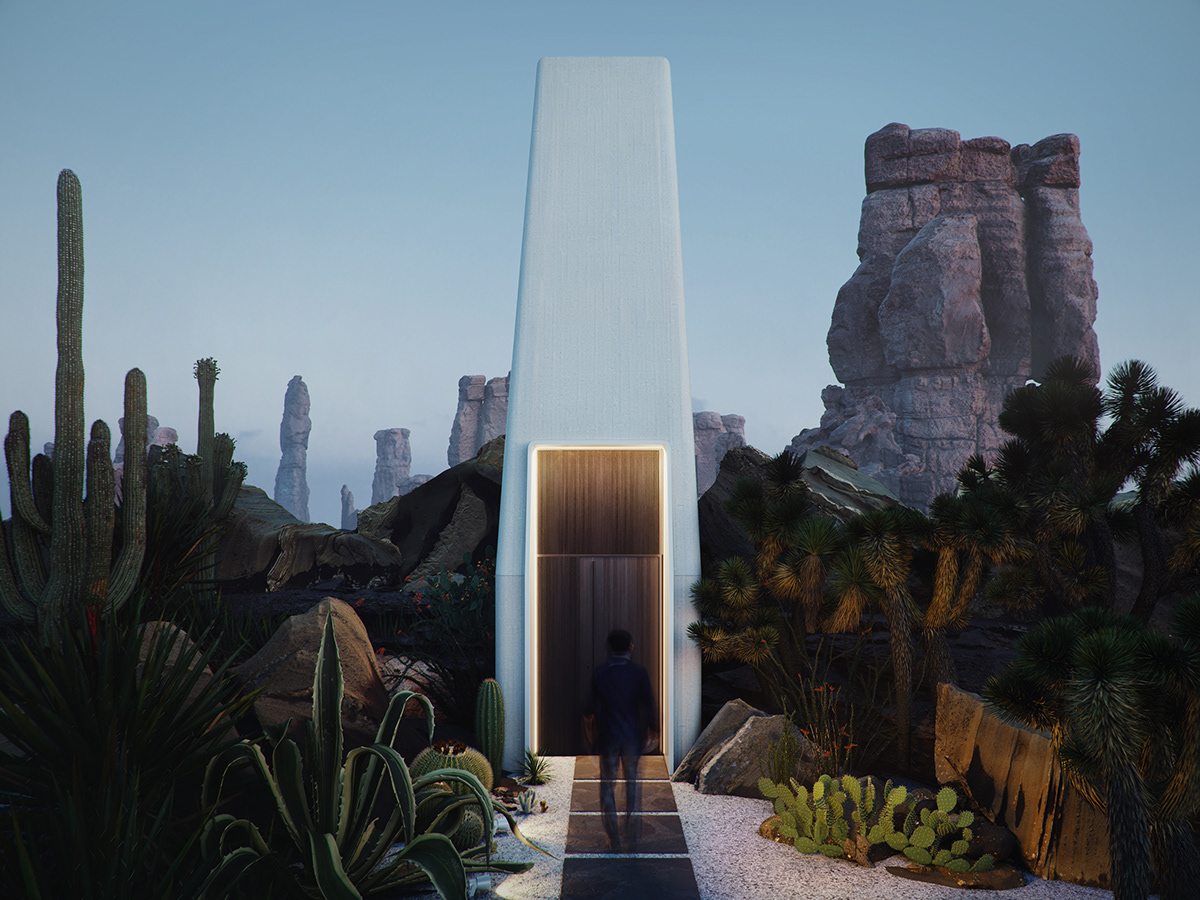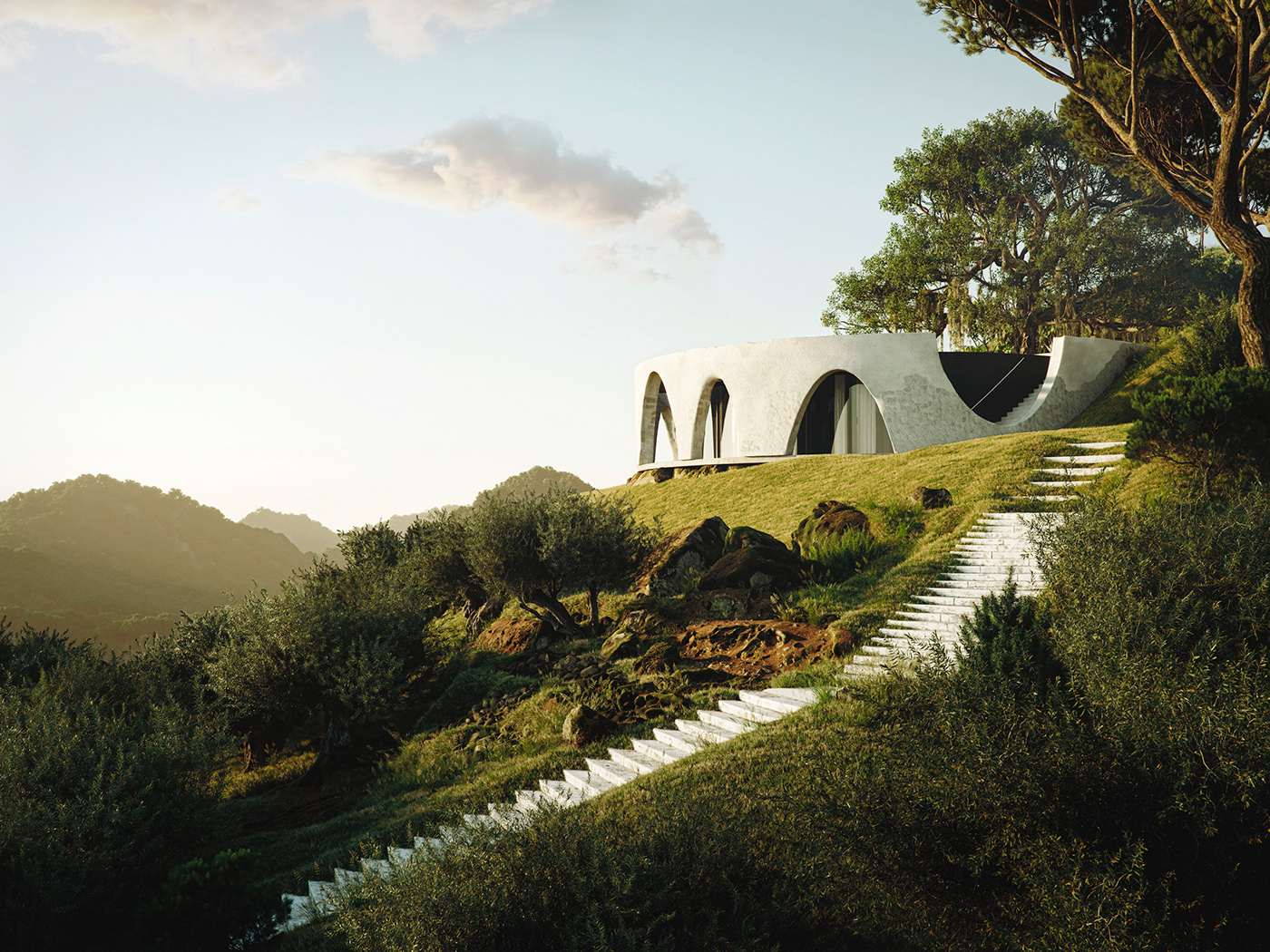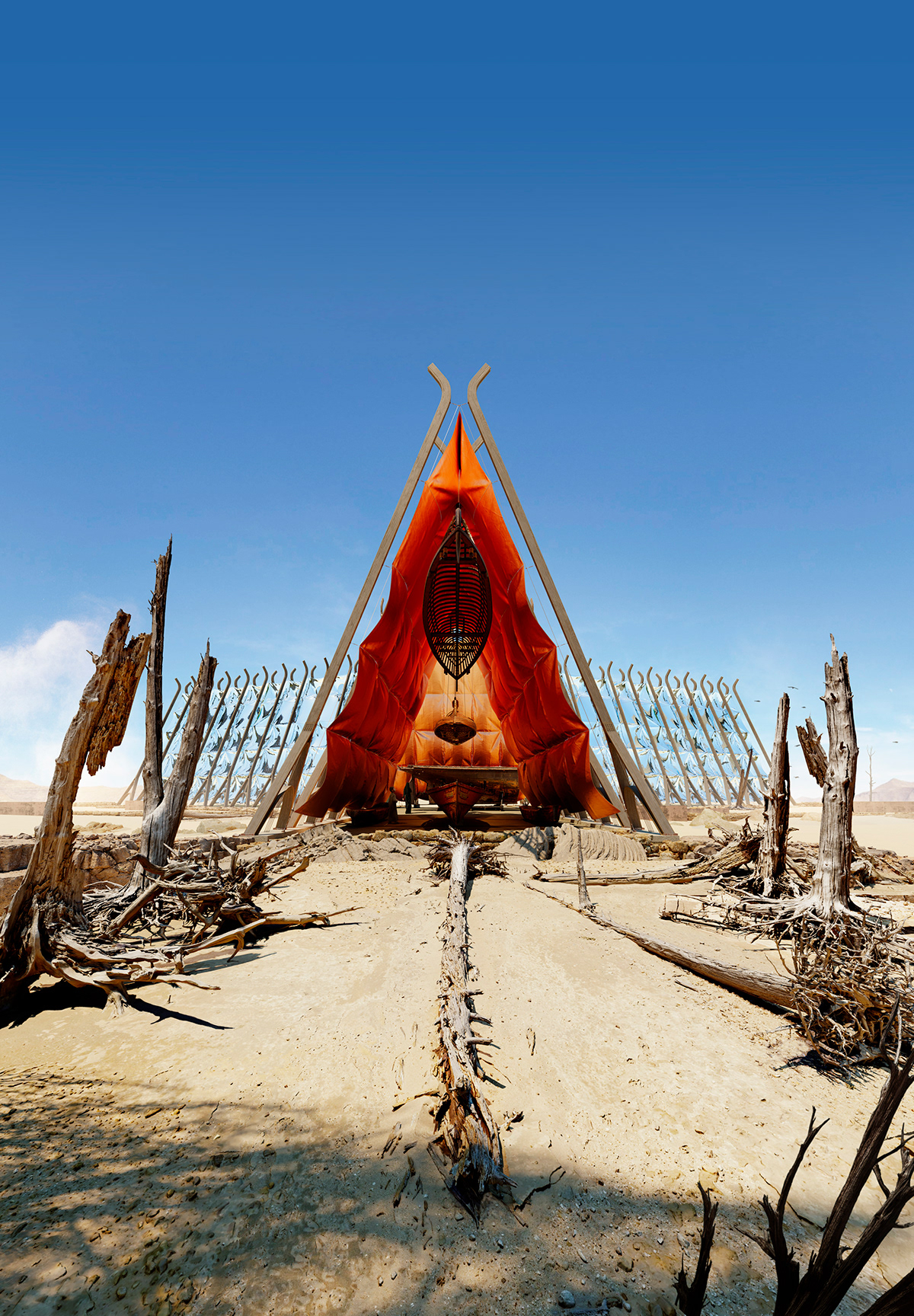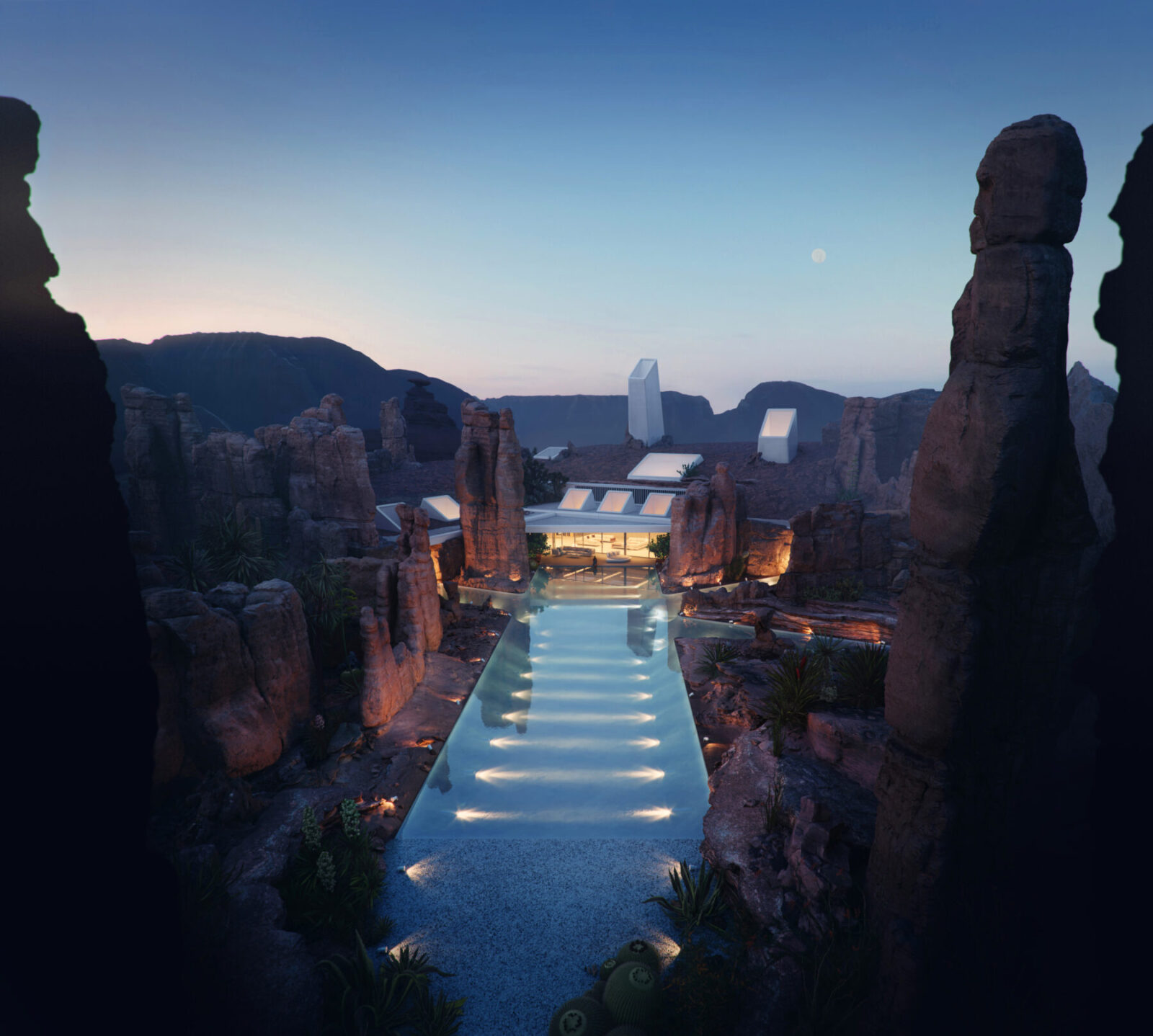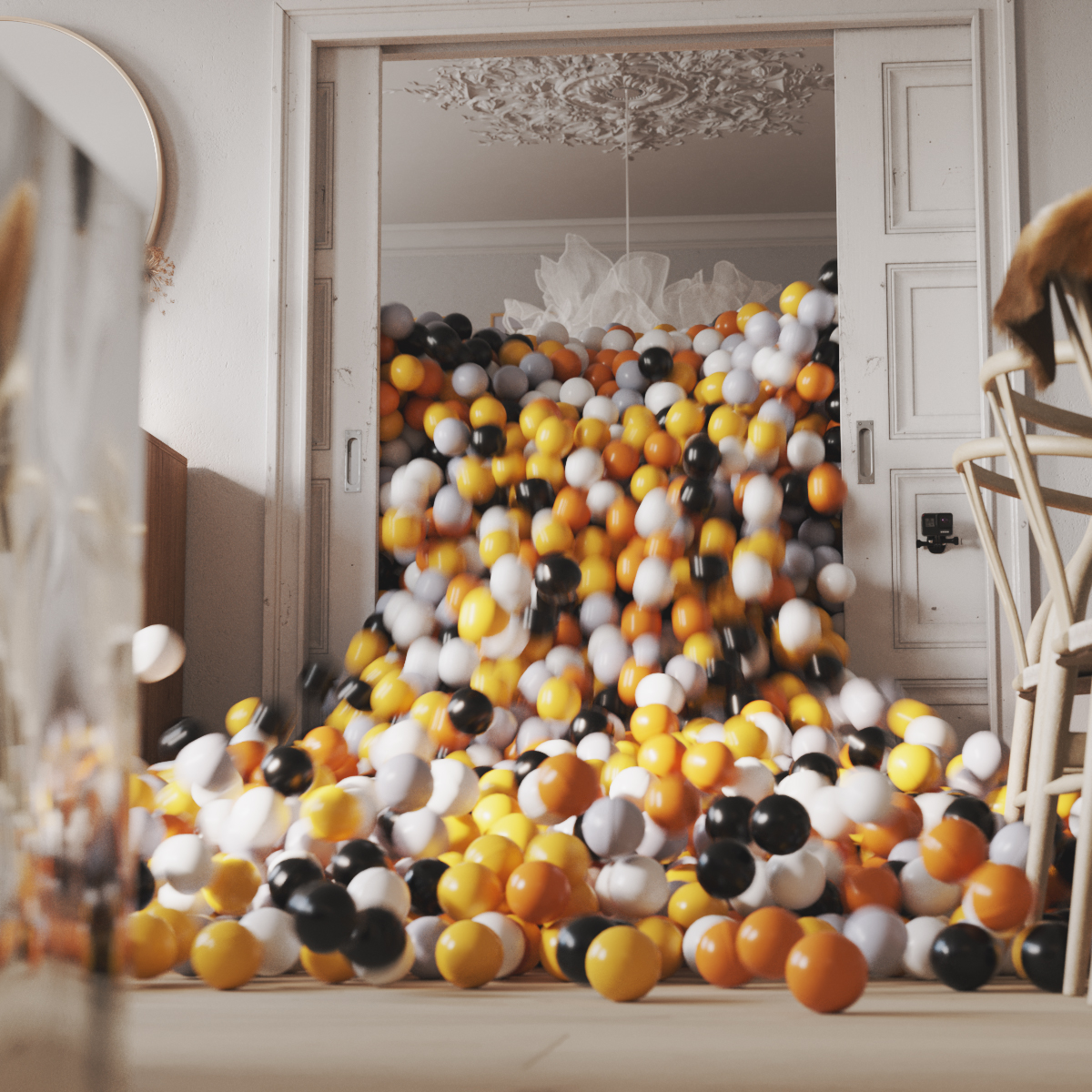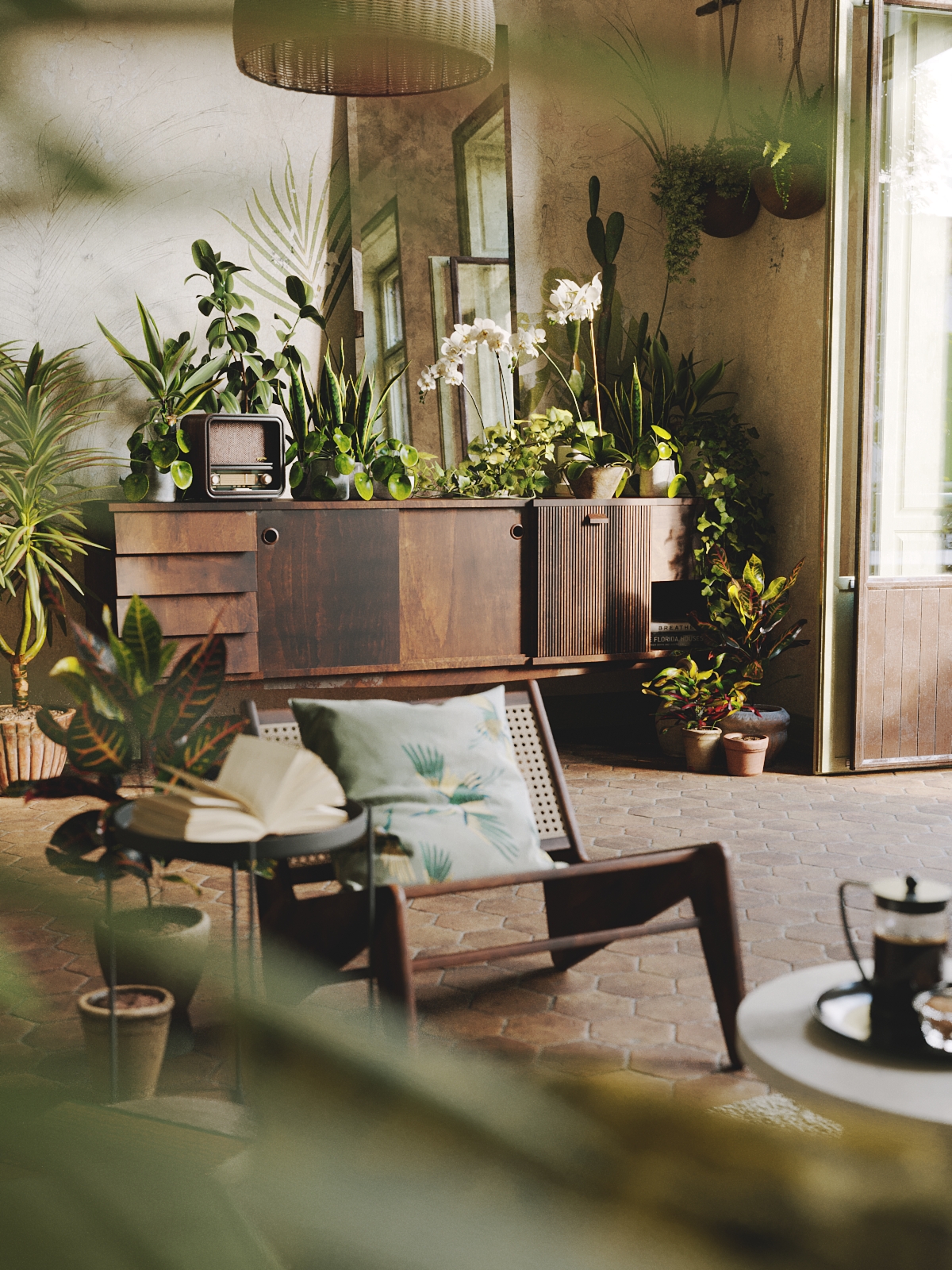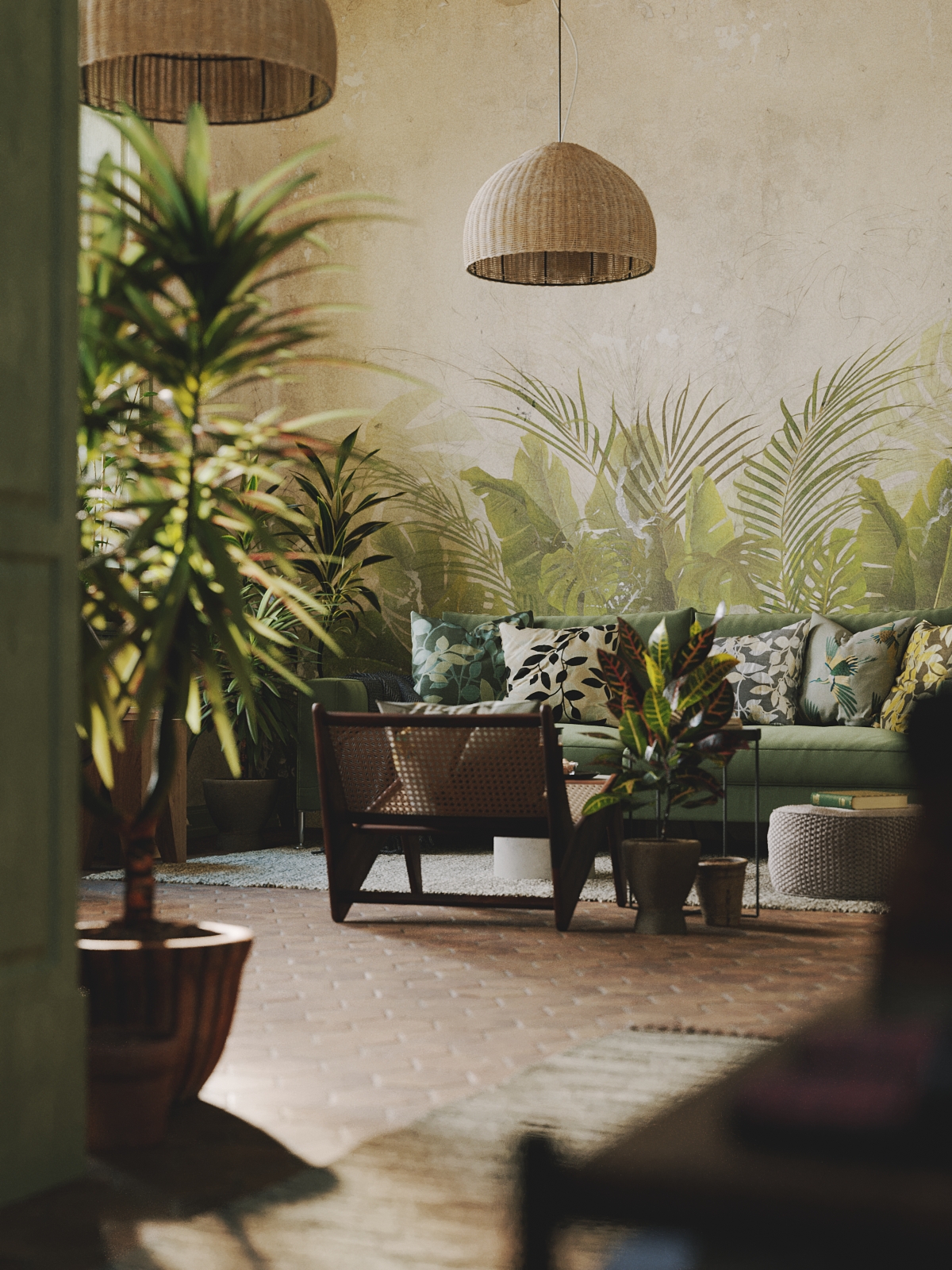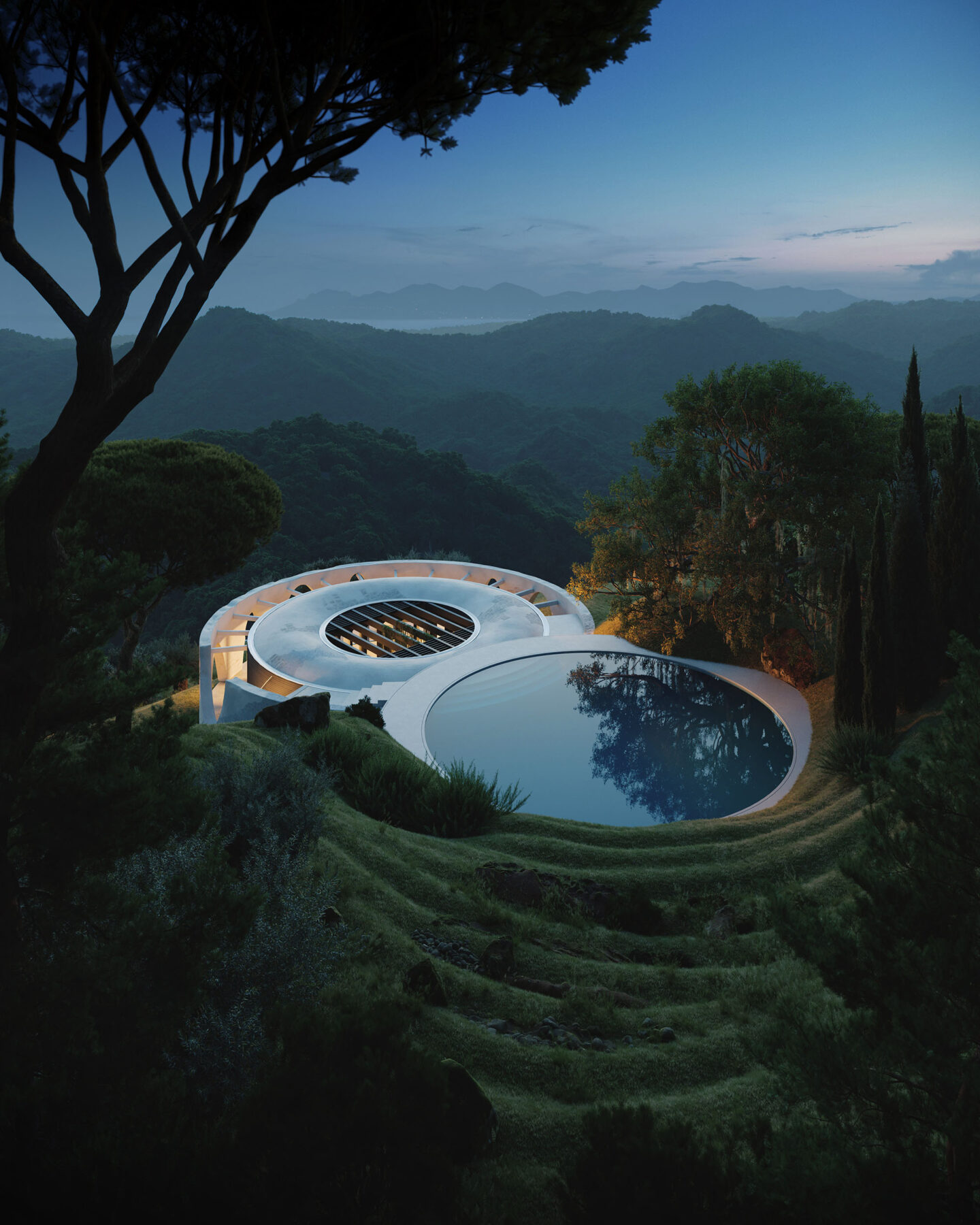The Common Point is a place to go when you’re looking for inspiration and knowledge on archiviz topics. On the Common Point website, you’ll find loads of useful free content, whether you’re a beginner or an expert, a CG artist, or an art director. They share what they know about design, concept development, and CGI techniques. Artur and Bartosz will show you how their most iconic projects came together and give you a sneak peek at their current projects, including the business side of it.
The Common Point encourages artists like you to explore your creative way. It allows you to learn as you listen to well-established artists while they discuss various topics of creative fields. This brand-new format lets you hear more than one approach to a single topic, and decide what works best for you. Whether you’re just starting or years into the industry, let yourself be open to exciting new ideas.
Artur Tamiola and Bartosz Domiczek founded Common Point, a platform that aims to provide high-end architectural visualization services and education to architects on how to become visualization artists and build a business around that. They service clients of all scales and across various industries from architecture to interiors to film and cinema. They have built their business around VRay, a rendering software helping create hyper-realistic images.
Artur Tamiola has 13 years of experience and has had the chance to challenge himself in various creative fields such as 3D rendering, animation, color grading, editing, copywriting, and art direction. He combines his skills to look at a project from a wide perspective before working his way down to every last detail. Artur looks for optimal solutions when running a project, and above all, focuses on good communication with people.
Bartosz Domiczek is an award-winning CG artist from Poland with a background in architecture and traditional art. His main field of expertise is architectural visualization but he enjoys creative exploration and stepping out of his comfort zone, especially in his personal work. Throughout his career, Bartosz has had the opportunity to work with major worldwide brands and he’s presented at industry events including SOA Academy Days and Total Chaos.
Artur Tamiola and Bartosz Domiczek shared their entrepreneurial journey and advice for sole practitioners and people that are getting started and going solo in their creative careers at the last Disrupt Symposium, which took place 1-5th May 2022.
Disrupt Symposium is a go-to Business of Architecture event hand-crafted for architects, engineers, and construction experts to share their experiences in practice operations. We are creatives, excited about changing the world by delivering projects that shape our communities and urban spaces.
Nevertheless, we get overwhelmed by the business side of our profession, and since all around the world the AEC industry is lacking in business education – we are forced to find our own answers. This process might be alienating since the topic of business and success is still taboo in this industry.
Disrupt Symposium is here to put a stop to that, and introduce an environment of learning and support in our community.
We ask key questions here:
How to attract clients?
How to hire and retain our teams?
How to grow?
How to communicate our value effectively through powerful marketing strategies?
How to be more profitable and even how to leave a legacy behind and retire proudly of personal accomplishments.
Next Disrupt Edition is coming up 1-3rd Nov 2022 and will welcome UNStudio, Grimshaw, Herzog de Meuron, HKS, HOK, Mace, Dewan Architects and Engineers, OfficeUntitled, K-Studio, and Archi-tectonics. Get your tickets here: www.disruptsymposium.com
At their presentation, Artur Tamiola and his partner Bartosz encouraged artists to explore and find their creative voice while trying to see the bigger picture and then work their way down to the smaller details. While they share these smaller nuggets of knowledge on their blog, today, they discuss being a freelancer in the digital age. What steps can you take to push your career forward and create your mark in the industry gradually while building your brand?
There are a couple of key elements starting with:
-
How to start a freelance career?
-
Getting better projects/clients
-
Increasing your perceived value
-
Your first high-profit client
How to start a freelance career?
Inform, inspire and motivate.
For a beginner, consider getting some experience first. Being employed as a junior is a great option that will allow you to grow in economically safe conditions. Relocate if needed because it takes 1 or 2 years to get you going. Picking the minds of fellow artists to understand the basics can be an invaluable experience, too. A while after you’ve gained experience, you might decide to stay or go on your way to start a business of your own. Both of these options are available to you without being right or wrong.
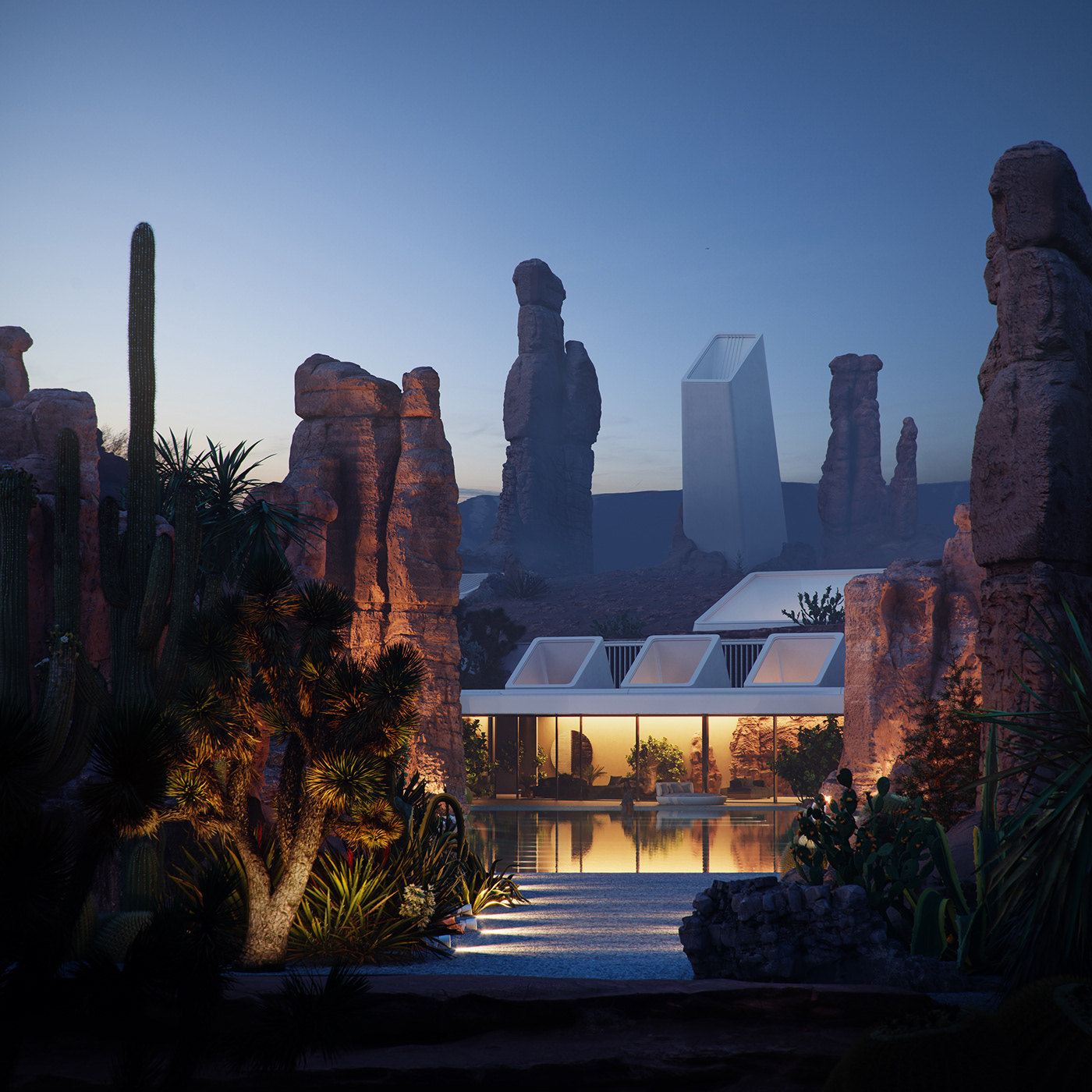
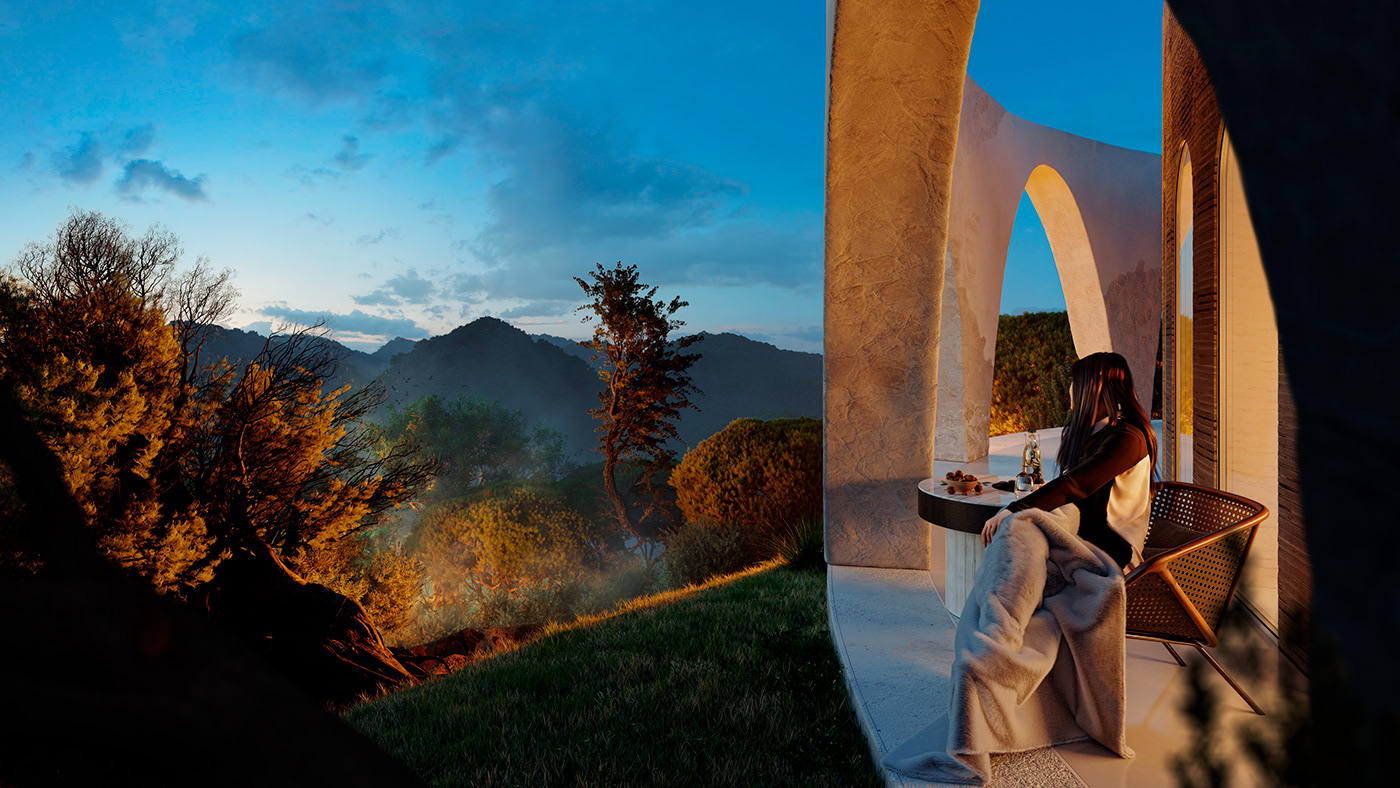
Your second option is to find an agency that will outsource some of their work. Be it creative agencies, studios, or fellow artists. Working for them can be a bridge between full employment and freelancing. Your offer could be more task-specific here, with fewer responsibilities, and will give you more space to grow organically without getting too involved in tricky client management. A few examples are options like 3D modeling, product rendering, and simple interiors or creating easier rendered shots.
If you do not have other options and want to start a freelancing career, you’d better prepare for a difficult grind. You will need to find clients, learn your craft and do everything independently. In other words, relations, branding, and pricing. The bottom is where the market is mostly saturated and most competitive, and the jobs are more likely to be low profile. Stay connected through local groups online like Facebook, LinkedIn, and more communities for 3d artists and such. Look for opportunities until you get to a relatively comfortable point. Soon after, clients will keep coming back, and you will find your rhythm.
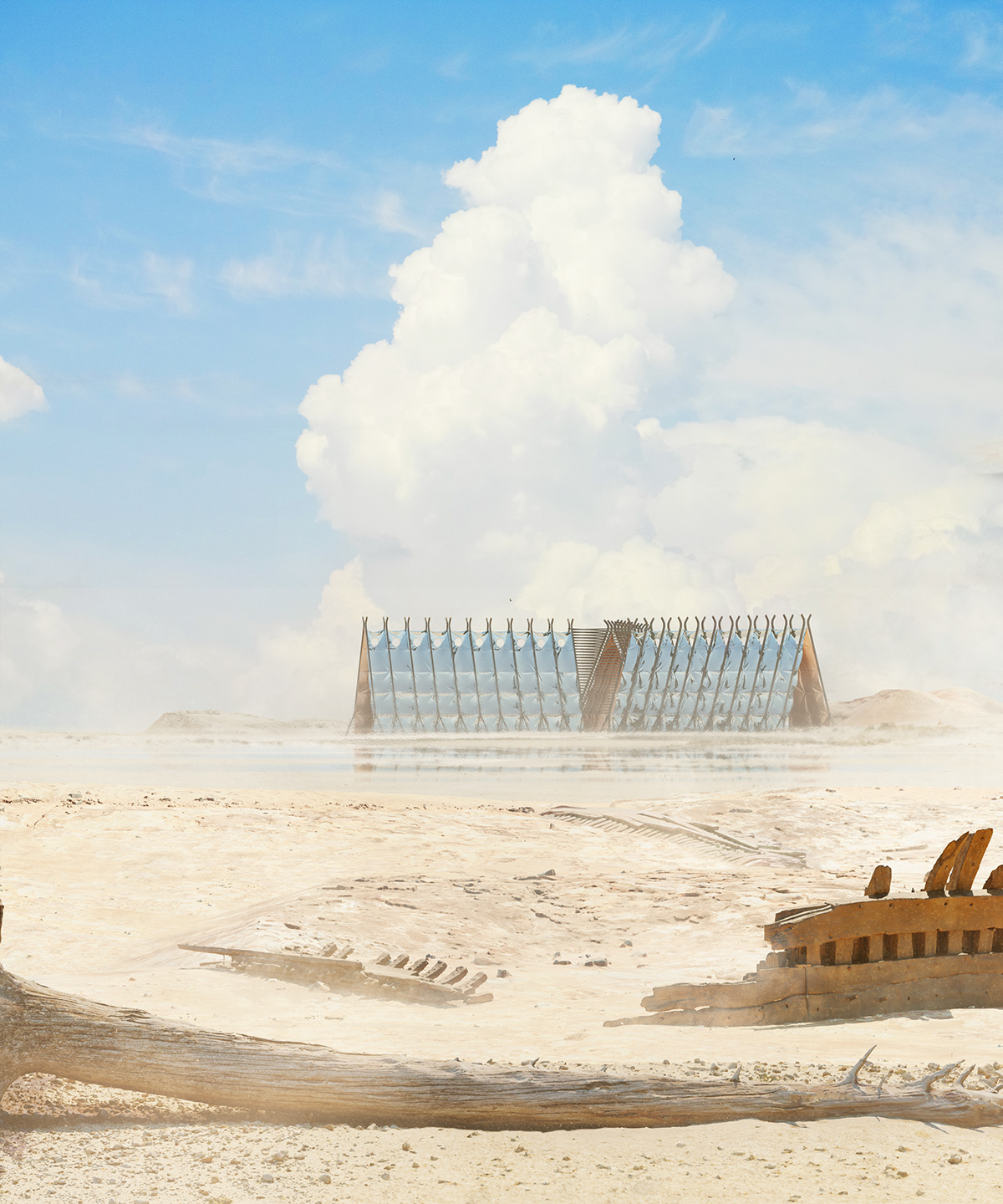
Getting better projects and clients.
Beginnings are rough. If possible, Common Point encourages you to be employed for some time since it is a good start for your career in the long run. The more important aspect is building a successful freelance career after you have an initial experience making good renderings.
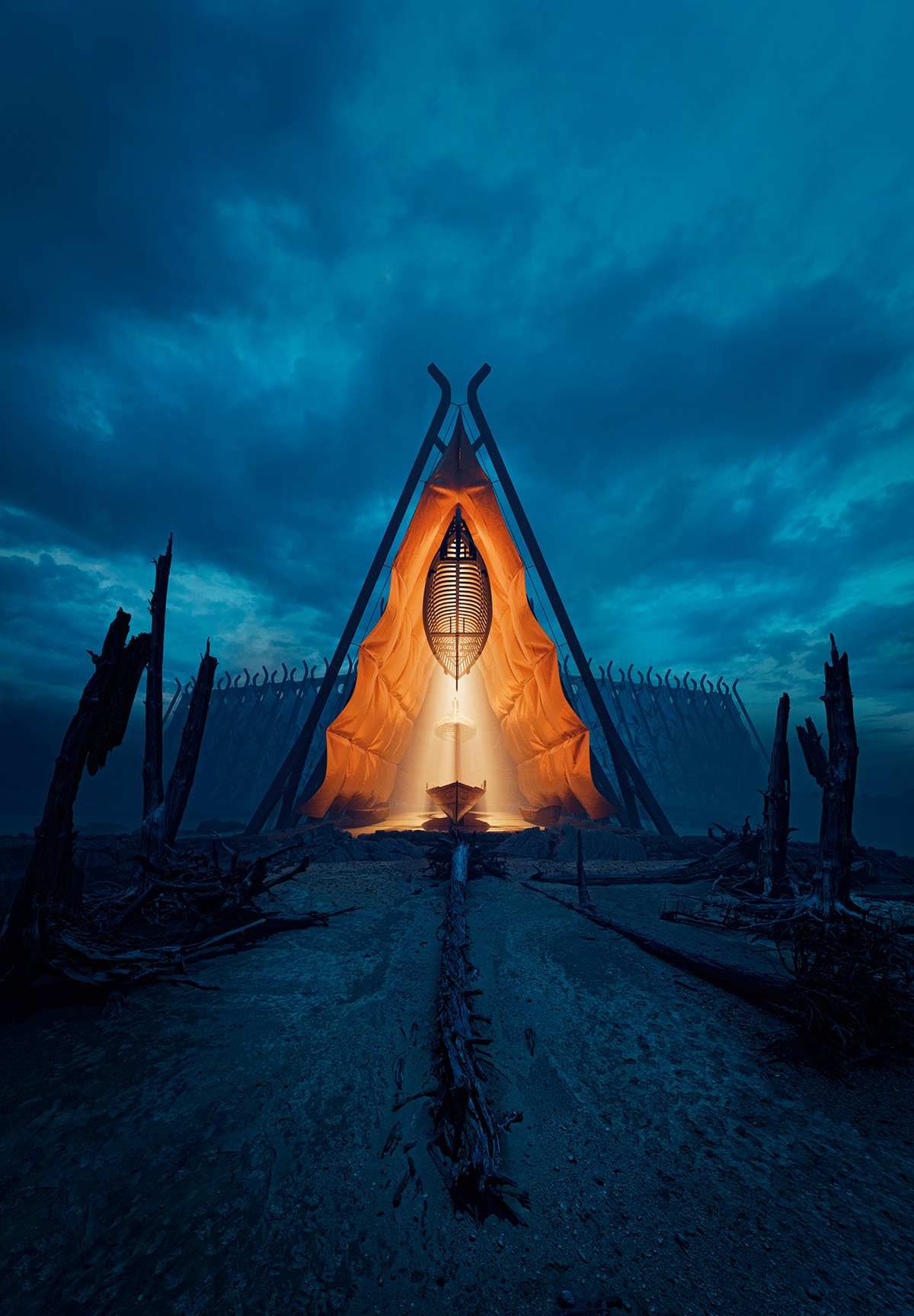
A couple of key elements are:
Communication skills
Listening, clarity and concision, friendliness, confidence, empathy, and open-mindedness.
Strong communication skills are vital in business. We don’t want to confuse or annoy our clients as trivial as it is. We don’t want to invoke any negative emotion in communication as it sets a low bar for a business. Don’t leave a bad impression on clients. Associate only positive emotions with working with you.
Good communication makes the client feel safe in your hands. You can go on and on about those things, but improving communication and transparency helps get the point across clearly. Show respect, listen, inform, keep your word, and have an open mind.
Sharing Knowledge
Building a community, networking, and positioning as an expert.
Share anything you know, and be a good sport. Help others by inspiring, informing, and b people to try new things at all stages of your career. Be active on social media, publish books, write blogs, and post content on YouTube. You don’t need to know everything to share something valuable. You can impact someone else’s career just by being two steps ahead of them. The situation is ideal if you’re starting to learn. Videos like “My one-year progression” gain such spectacular feedback.
This way, you create a community around you, connect and bond with people, and position yourself as an expert. An expert will earn you more than a beginner for a similar job. If you’re an easily accessible person that communicates well, you will increase the chances of someone wanting to work with you and join their team.
Branding
Tailor your messages through online business cards and human relations
Everyone develops a branding strategy, even if they don’t admit it. The portfolio is a part of branding, but also, it is much more. The emotions you evoke in people, and their responses are determined by branding. Some people gradually work their way up to clients and projects, but messages can be tailored and posted online to influence branding and act as a catalyst for people to notice your work.
While working on commercial projects, find a window to do personal projects simultaneously. For example, start working on luxury interiors, add images of your work and post them to sell yourself. If you do so, clients with a higher profile gravitate toward you because they see your work and remember it.
There are tons of highly successful Instagram accounts that function that way. Take time to invest in branding and build your narrative. Be consistent with your message, and the right people will notice you. Then, you will gain clients that fit your ideals.
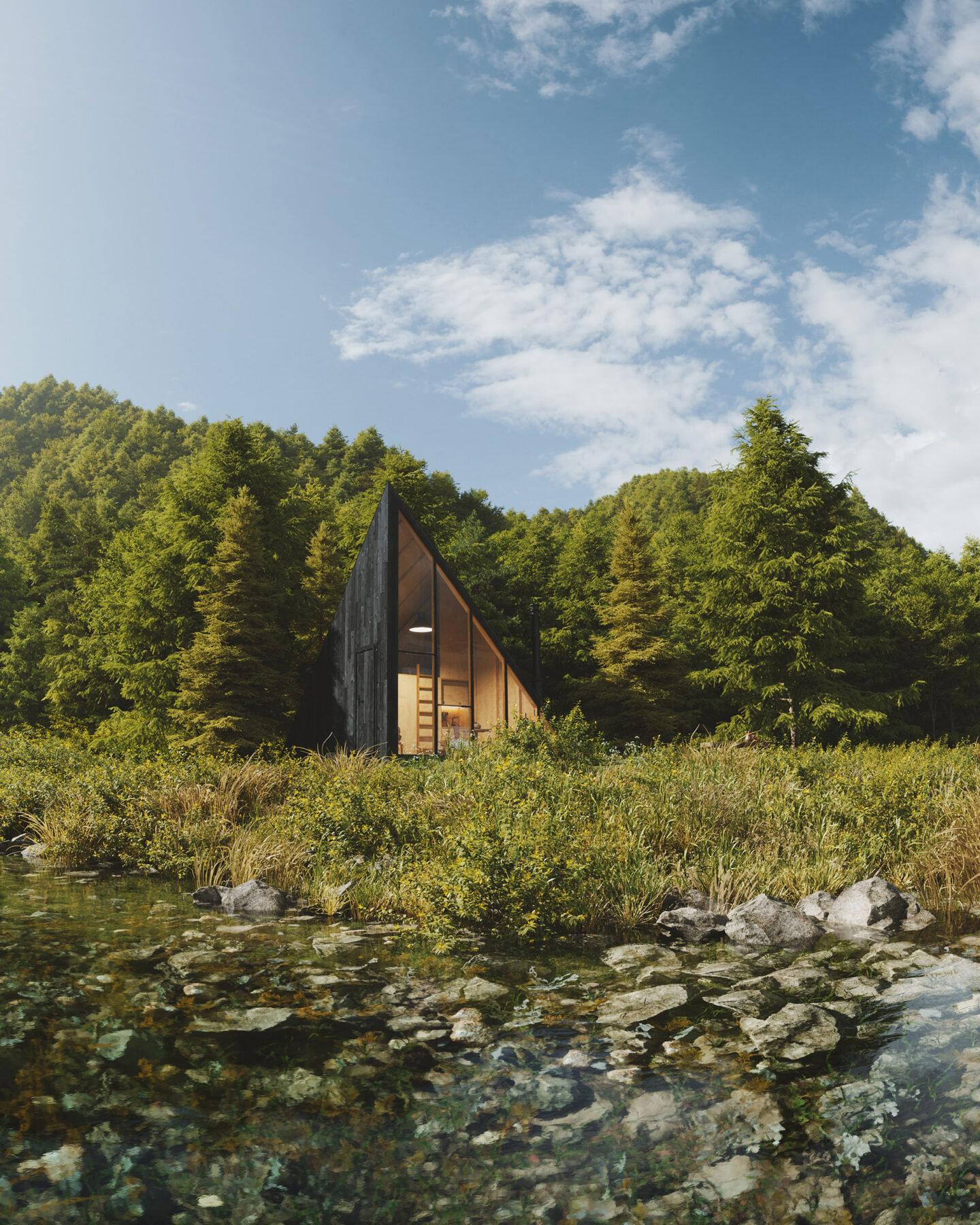
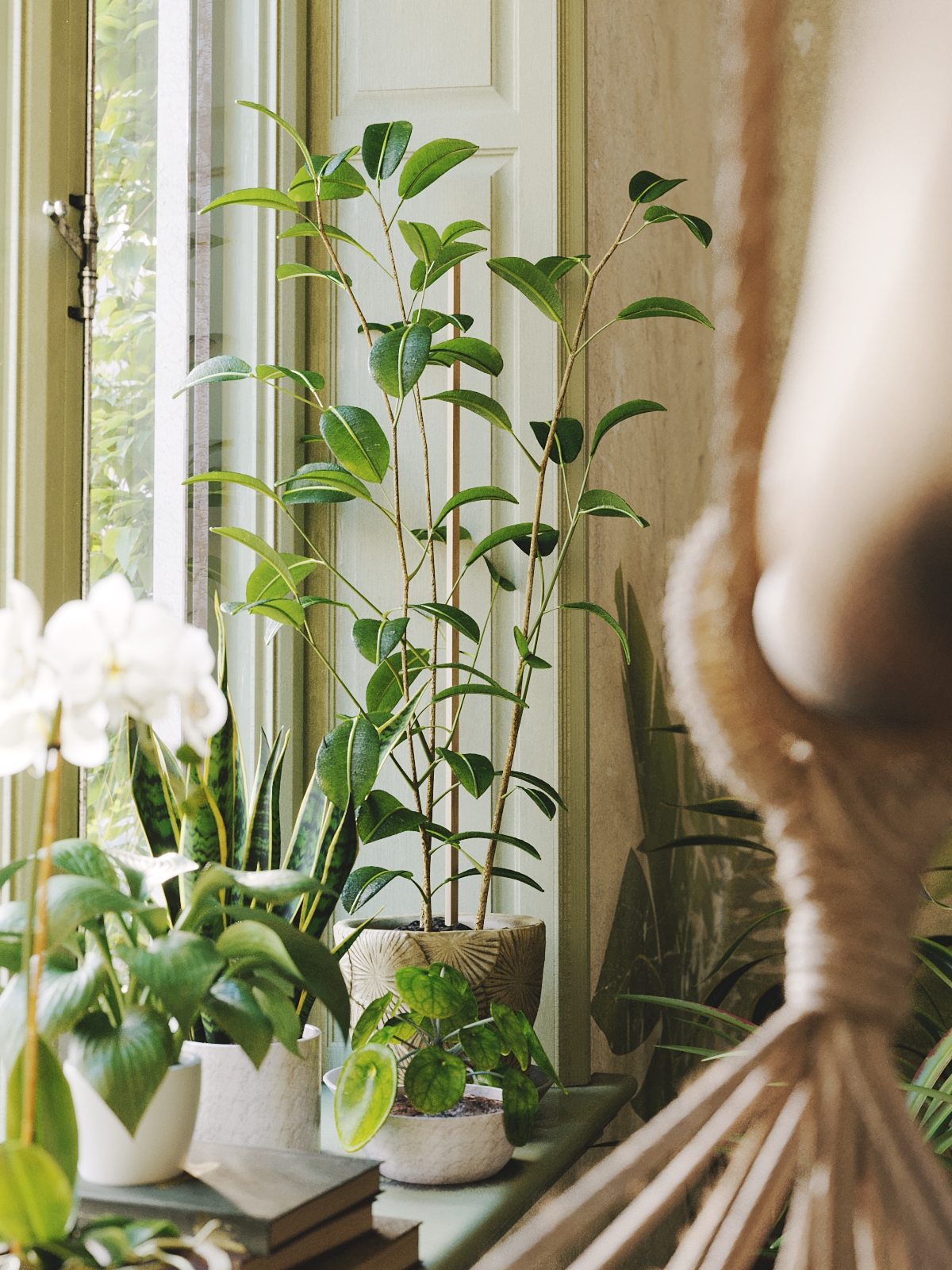
Solving complex problems
3D/2D app, sculpting, color grading, world building, parametric design, editing
You can’t do the same work that everyone else does. Even if you do that, it is where the biggest competition lies, and earning more in that space is much more challenging. Anyone can make good interiors, but not everyone can render a nighttime city panorama view. It’s the complexity that screams bigger money. Consider what tools you need to acquire to get to a higher level and quality of work. What are the plugins and software that you need to invest in? Perhaps buying a new setup, CPU, or ram. This will help with more complex problems. And a complex problem could be anything from a big project, completing it faster or with exceptional service. All in all, the client wants to feel assured of the success of his project.

Increasing your perceived value. (what makes your customer pay more)
Once you’re 2-3 years deep into freelance, you need to understand the idea of “how to earn more.” And the answer is your client should want to pay you extra. He needs to think of you and your work instead of other freelancers. They must value you before you tell them your price.
Better clients should find you instead of looking for them on your own; that’s the key. The idea is simple and perhaps a little abstract, but it is the reason we invest so much time in human relations, sharing knowledge, building your brand, and good customer service. Clients must know something about you, like you, and trust you. It allows you to grow in front of them visibly and influences how much you can earn per rendered image. You must be noticed and recommended as a high-value service to earn more for the same job.
To sum up:
Low Skillset- 1 yr
Medium Skillset- 1-3 yrs
High Skillset – +3yrs
If you’re someone with a low skill set, consider working for agencies and make an effort during the initial grind. Learn new skills, and take up personal projects on the side. If you’re landing your first job and doing well, people will like to work with you. Invest in personal relations through good communication and online relations through sharing knowledge in your community, staying humble, listening, and setting professional goals.
At this point, you’re a medium skillset freelancer and must focus on visibility and creating a brand. You’re tailoring a narrative and building a community around it. Other artists and creative agencies gravitate toward you, which positions you ahead of many other freelancers. You’re handling more complex projects and completing them faster and better with constant workflow. You invest in your business and work harder to increase your perceived value using soft skills and software. You also enjoy working on personal projects and are an invaluable asset to your clients.
When you’re a high-skillset freelancer, you provide a higher quality of work and are an asset to your online presence. Now is when you look for a high-profit client.
Growing freelancers role, building your brand and network and high profile clients, and scaling.
At this point, your clients probably say a big yes to your estimations, so you don’t really send few images anymore but rather cooperate with the client to achieve their goals. It is an important shift in thinking because you are no longer a tool but a proper partner in business. Clients start to perceive you as an expert and better suited to handle problems than themselves. This means no micromanagement and minimum feedback. Now, the client comes seeking expertise instead of validation. You need experienced problem-solving abilities and tech skills to handle high-profit clients, for which you will be ready at this point.
The biggest challenge is that this client will not come to you for five images every once in a while. They will order ten, and as soon as they are ready, another ten, and so on. At this point, you are self-sufficient, but time is limited. You are faced with the question of what to do next with your freelance career and business because if you keep saying no to new clients and client requests, they will eventually dwindle. And some will even look for another service provider to replace you. But fortunately, we live in the digital age of freelancers, and you have already built your network and relations. You have come full circle.
You don’t have to risk building a new company to handle one or two big clients. You can organically scale up and down when necessary. It is your turn to help up-and-coming freelancers grow, and the growth of your own company will follow. You can shift your focus from production to management if you like or have your hands do the creative work. When you find your first high-profit client, you will realize that you have a successful freelance career going and have the ability to take it in any direction you want.
Summing it all up, a freelance career in the digital age is constantly growing, with brand-new opportunities arising all the time. Sometimes even though tough as it is, It’s worth it, and the ceiling is very high. It is helpful to start the journey with prior experience, but even if you lack it, you can succeed with hard work and consistency. Tailoring branding and building a network of relations will help the perception of your value and help win high-profit clients. They will bring your operation to a whole new level, and it will be your decision whether or even if you want to scale up, build a fully-fledged studio or remain a small boutique.
Whatever roles you choose, it will be a hell of a ride.
Q&A discussion based on the presentation:
Sara Kolata: Critique and theoretical approach are a big part of architecture and education. Please discuss the importance of maintaining a critical mindset while communicating with clients that cannot distinguish between successful and ineffective projects.
How do you educate your clients, and how does your branding help you achieve this client’s goal?
AT: Listen to your clients, understand their needs, and educate them along the way. Ask questions and steer the conversation to where you want to be. Nobody likes to be taught, but people love to arrive to answer by themselves. So help them achieve that very subtly, just by asking questions. Some clients seek validation instead of expertise, so they already have preconceived ideas they feel they already know, so you need to have some experience. Tailoring your message online helps you position yourself higher in a particular field and just be heard.
Preparing yourself while being respectful and not letting your ego take control also helps. Have an open mindset and understand that the client might have something important to say but doesn’t actually know how to express it.
BD: I would like to add that the higher the client’s profile, the more willing they are to get educated, and lower profile clients come to us to fulfill their visions, and it can be impossible to educate them, somewhat like banging your head against the wall. It’s not always possible and very often requires a lot of flexibility and complex skills to communicate and figure out what’s in the client’s mind.
SK: What, according to you, is the most important thing a freelancer must consider investing in?
AT: Invest in yourself. It’s all about you. The more you know, the more people you know, and the more access you have to their minds. Be it, architects or visualizers, be humble and grow as an expert. Have a positive, creative mindset to solve problems, make mistakes, and grow from them. You can learn techniques while enjoying them and getting out of your comfort zone.
SK: Putting yourself into challenges and out of your comfort zone might help in personal development. But how do you manage burnout? It’s something a lot of people struggle with. Especially as you mentioned in your presentation, freelancers must start working independently and start a business simultaneously.
BD: It’s a very individual thing that I have not experienced. But on the one hand, freelancers are prone to burnout because we tend to work alone into late hours of the night and are in a constant overwhelming grind. But on the other hand, we have plenty of different tools to counteract it. We can shuffle between fields.
For example, I did an architectural visualization for advertisement and entertainment in the past. Keep it fresh, new, and interesting and work on other personal projects. That helps fulfill our creative urges. Talking to people helps keep us socially stimulated as well. Know yourself, take control when things get worse, and make changes to accommodate a healthy work-life balance.
AT: Having burnout is fine. You might not still enjoy and love the same things you enjoyed 10 yrs ago or even 1 year ago. It’s fine to leave something behind and explore other things. There are also ways to mind map and transition into different areas that interest you. Burnout is natural, perhaps if you’re doing the same thing again and again and trying to learn new things without a realistic approach. Focus is important, know yourself and make a conscious decision and be aware of factors that contribute to burnout.
SK: There are so many tools in the market. Is it a must to excel in all of them?
BD: We are not masters of all tools, and it is not necessary to master all of them. Just enough to know its features and how to do things efficiently. 10 -20% of knowing the tool might be very useful. Being a master in a tool is something you can choose to specialize in. But we probably don’t know them all 100%. There’s always more to learn.
AT: If you’re willing, you might look for different software in the Chaos family. There are many, and they are versatile. They have the latest updates and bits and pieces of premade templates and textures to get you started. VRay and Corona are similar too, with minor differences. If you’re a beginner in architecture and visualization, this is a good place to start.
SK: You are investing in education and creating your own training. Would you quickly comment on the training?
BD: This training is our long-awaited baby. We’ve worked on it for a long time and created our blog as well. It’s the sum of all our experiences and focuses on creating arch exteriors but is also targeted toward people who are interested in environment creation and concept art. Lighting, colours and other details related to arch exteriors are also included. We are almost wrapping it up.
AT: We approached it with a professional mindset where you can take away a lot of knowledge. It will be different from everything else available on the market. Comprehensive and fun.
Presentations and learning outcomes such as these ones are brought to you by Disrupt Symposium. The next edition is 1-3rd Nov 2022 and will welcome to the stage: UNStudio, Grimshaw, Herzog de Meuron, HKS, HOK, Mace, Dewan Architects and Engineers, OfficeUntitled, K-Studio and Archi-tectonics. Get your tickets now! www.disruptsymposium.com
READ ALSO: How does K-Studio, headed by Dimitris Karampatakis create the Architecture of Enjoyment?
